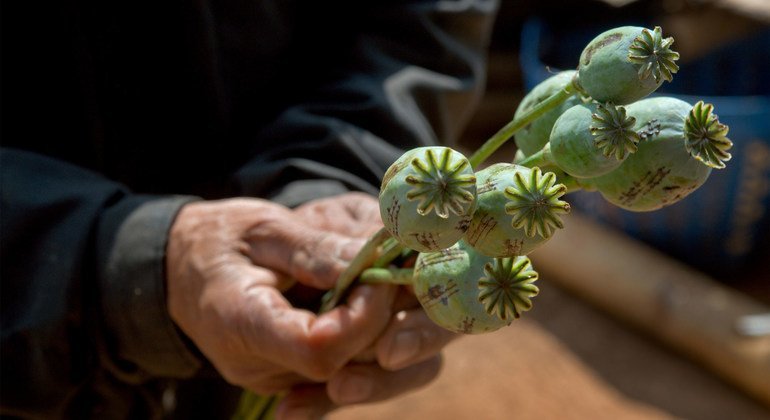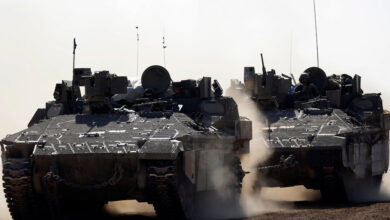Afghanistan: Opium cultivation to increase by nearly a third, warns UNODC |

Opium cultivation in Afghanistan – latest findings and emerging threatsis the first report on the illegal opium trade since the Taliban returned to power in August 2021.
Authorities banned all growing of opium poppy and all narcotics under a strict new law, in April 2022.
Opium is an essential ingredient in the production of street drug heroin, and the medical prescription opiate that millions of people rely on for pain relief worldwide. Opioids are also increasingly abused, causing widespread addiction problems in countries like the United States.
This year’s harvest is largely exempt from the decree, said UNODCand farmers in Afghanistan must now decide to plant poppy next year amid continued uncertainty about how the Taliban will enforce the ban.
The sowing of the main poppy seed for the 2023 crop must be done by early November this year.
Opiate lurking
“Afghan farmers are trapped in the illicit opium economy, while arrest events around Afghanistan show that the opium trade continues unabated“UNODC Executive Director Ghada Waly said at the launch of the new survey.
“International community must work to address the urgent needs of the Afghan peopleand strengthen response measures to prevent criminal groups from trafficking heroin and causing harm to people in countries around the world. “
According to UNODC findings, the cultivation of opium poppy in Afghanistan 32 percent increase compared with the previous year was 233,000 ha – making the 2022 crop the third largest cultivated area since the start of the track.

Harvesting opium poppy in an opium poppy field in Badakhshan, Afghanistan. Raw opium is cooked before it is suitable for smoking. Photo: IRIN / Manoocher Deghati
Center in Helmand
Cultivation continues to be concentrated in the southwestern regions of the country, accounting for 73% of the total area and being the highest growing crop.
In the province of Helmand, One-fifth of the arable land is devoted to growing poppies.
Earnings tripled
Opium prices skyrocketed following the announcement of a farming ban in April. Income of Afghan farmers from the sale of opium more than tripled, from $425 million in 2021 to $1.4 billion in 2022.
This new figure is equivalent to 29% of the total value of the agricultural sector in 2021. In 2021, the value of poppy on the farm accounts for only about 9% of the previous year’s total agricultural output.
However, an increase in income does not necessarily translate into purchasing power, UNDP The survey noted, as inflation has skyrocketed during the same period, with food prices rising by an average of 35 percent.
Reduced productivity
Following a drought earlier this year, opium production has dropped from an average of 38.5 kg/ha (kg/ha) in 2021, to an estimated 26.7 kg/ha this year, resulting in harvest 6,200 tons – 10 kg/ha. cents less than in 2021.
The 2022 harvest can be converted to 350-380 tons of export quality heroinAt 50-70% purity, says UNDP.
Traffickers plow hoes on
Epilepsy events collected by UNODC’s Drug Monitoring Platform indicate that the opium trade from Afghanistan has been continuously without interruption since August 2021. Opium Afghanistan supplies about 80% of all opium users in the world.




